Even the best mentorship program can fall flat without the right infrastructure. Mentorship software isn’t just a tech solution—it’s what turns mentorship from a side project into a company-wide growth engine.
With 98% of Fortune 500 companies boasting mentorship opportunities, the question isn’t if you should invest in mentoring—it’s how to do it well. The right software empowers you to scale what works, connect employees meaningfully, and drive the talent outcomes that matter to you most, like retention, engagement, development, and mobility.
In this article, we’re diving into everything you need to know about mentoring software and how you can choose the right one to reach your talent goals.
What is mentoring software?
Mentoring software is a technology platform that helps organizations build, manage, scale, and measure mentorship programs—turning them from manual, ad-hoc efforts into strategic talent initiatives.
It uses technology and automations to centralize all mentoring efforts in one place, including mentor-mentee matching, facilitating mentorship experiences, and reporting on ROI.
Mentoring software takes the manual effort out of talent development initiatives to help organizations make the most of their mentorship programs and experiences.
Manual mentorship programs versus mentorship software
Yes, mentorship programs can start manually—and often do during the pilot phase or when resources are limited. But what works for a handful of participants quickly falls apart when you try to scale.
The reality is that leaving mentorship stuck in spreadsheets can create more headaches for everyone involved. Sticking with a manual approach may feel like the path of least resistance, but it’s actually a fast track to program fatigue, poor engagement, and stalled impact.
It’s extremely difficult to scale, can actually cost more resources, and prevent your program from reaching its full potential—limiting ROI and costing valuable buy-in from stakeholders.
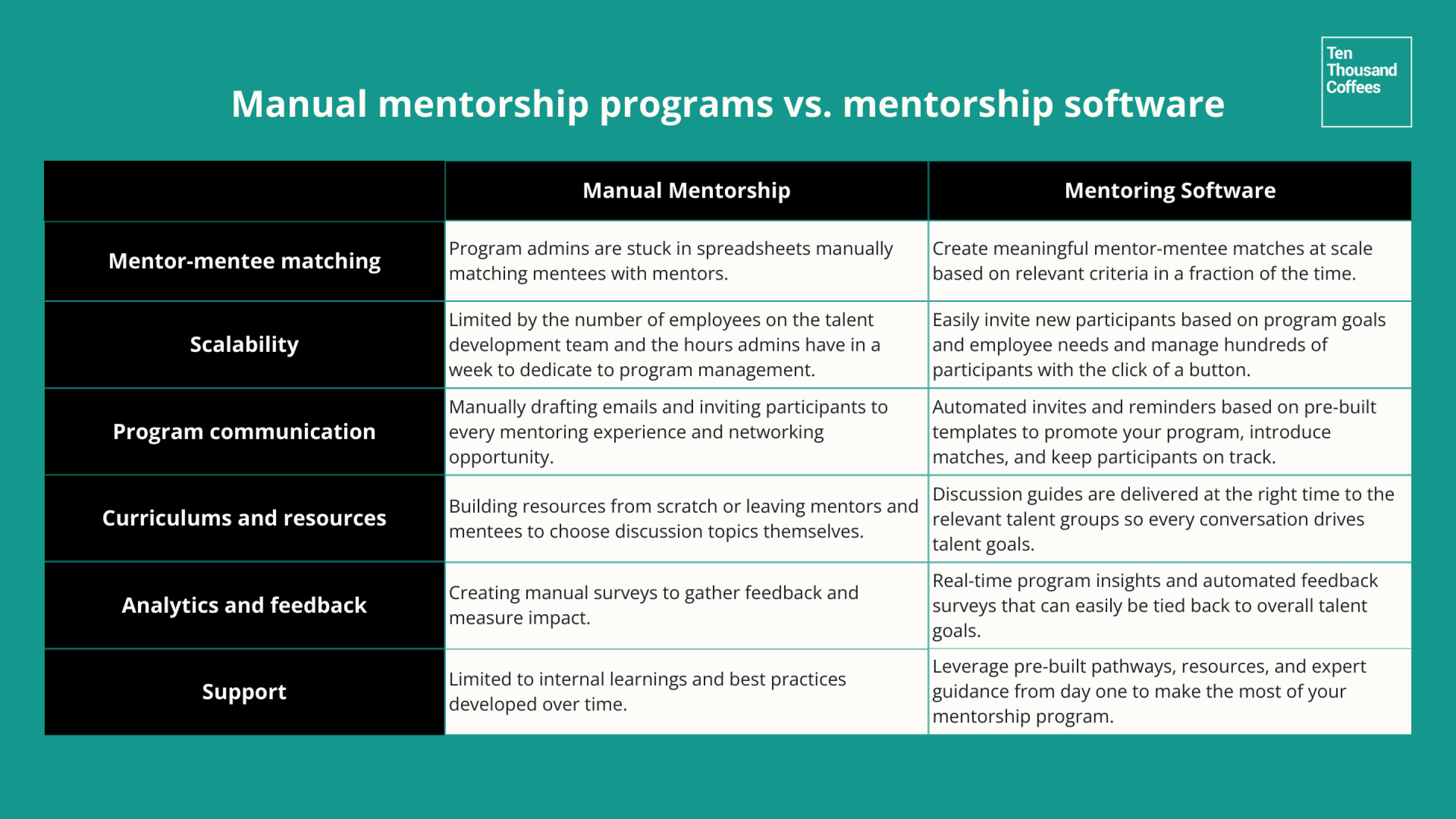
Who needs mentoring software?
Anyone taking part in a mentorship program can benefit from mentoring software, from stakeholders and program managers to mentors and mentees. But they’re commonly used by teams and managers that are responsible for talent and learning development—often HR, Talent, L&D, and/or ERG leaders.
Of course, investing in software often isn’t top of mind when mentorship initiatives are brought to life. Despite the immense impact on business and talent goals, mentorship programs often start off as side-projects that aren’t given the resources—and software—needed to succeed.
When mentoring programs are managed manually, they often become a heavy lift (or full-time job) for already-stretched individuals—pulling focus from other high-impact initiatives. The right mentorship software not only lightens that operational burden, but also ensures your program delivers the outcomes stakeholders care about.
Mentoring software is best for organizations that aim to:
- Scale their mentorship program efficiently, while enhancing quality and impact.
- Eliminate the admin overload—replacing spreadsheets, manual program design, and email chains with targeted templates and automation.
- Align mentoring with broader talent and business goals, like engagement, retention, and internal mobility.
- Measure ROI and surface insights that prove mentorship’s impact on strategic outcomes.
- Evolve mentorship from a feel-good initiative into a high-impact, business-critical talent strategy.
“It's a little bit tempting—I know I've fallen into this trap—to think like, oh, I've learned a lot. I can do it efficiently next time, and I can just do the same thing for more people. You can absolutely learn and create some things you can repeat, but not scale in the truest sense. It's really hard to go from 50 people to 500 people to 5,000 people doing the exact same thing. You're going to need to add more capacity into the mix.” - Christine Silva, Talent Advisor, former leader at RBC, Catalyst, Shopify
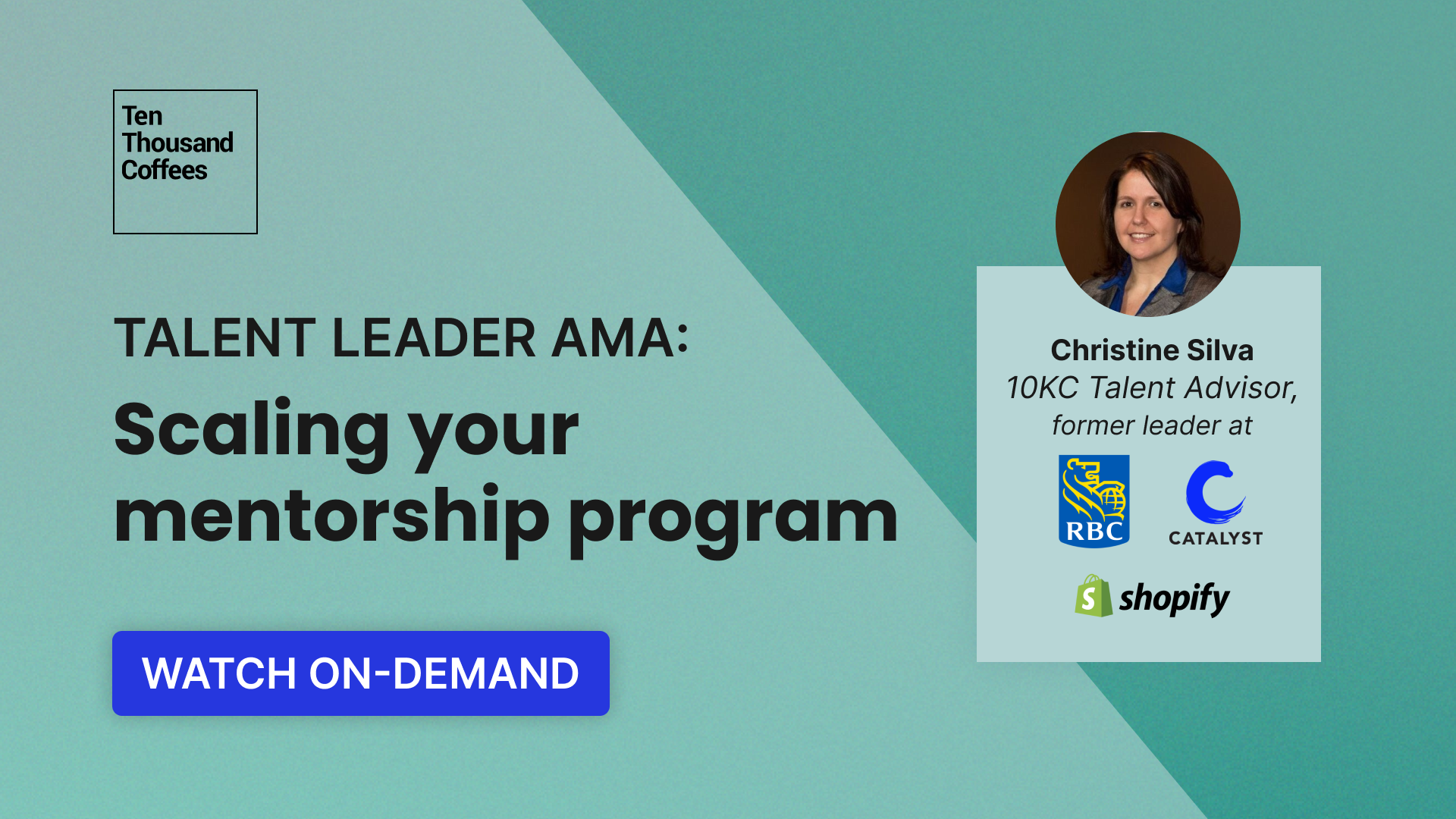
8 key features of the best mentoring software
So, what exactly does effective mentoring software look like?
The best mentoring software for your organization will ultimately depend on your team’s unique needs and goals . Here are some of the most valuable features you should look for when searching for a mentorship software.
1. Centralization
Mentoring software isn’t your HRIS platform and it’s not a team wiki—rather, it’s one software that centralizes everything you need to implement and execute your mentoring initiatives. It allows program managers to do everything from start to finish, including designing the program and measuring outcomes.
Having a single source of truth for your mentorship program helps keep your program aligned with your team’s objectives while simplifying the process for both admins and participants.
2. Multiple mentoring experiences
Traditionally, mentorship has been strictly limited to 1:1 relationships between a junior mentee and senior mentor. But we know that in order for mentorship to be the most effective, it should be multidimensional. Every employee connects and learns differently, and offering various mentorship formats provides opportunities for participants to learn different skills from a wide range of colleagues.
Leveraging peer-to-peer mentoring, senior-to-junior (reverse) mentoring, and even small group experiences can amplify engagement and connect employees with more subject matter experts across the organization. It creates opportunities to dive deeper into key topics, promotes cross-functional collaboration, and sparks knowledge sharing across the organization—even beyond your mentorship program.
It turns mentoring into a full, relationship-based learning experience, rather than just one connection.
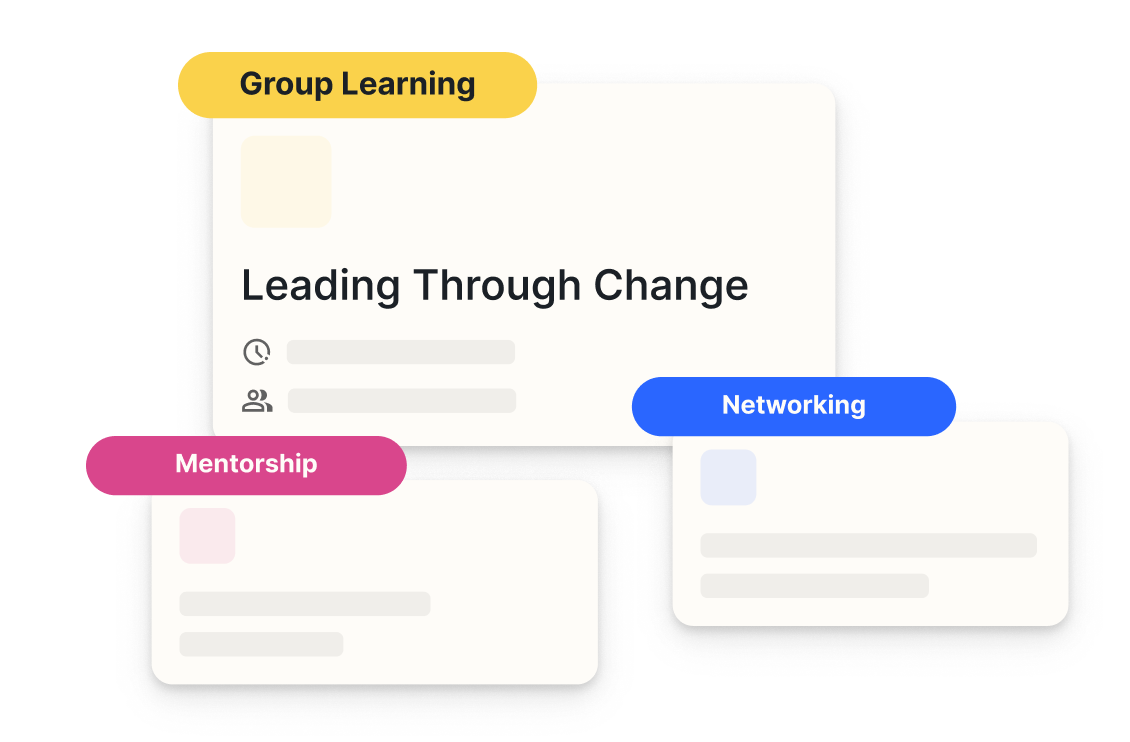
3. Structured pathways for different talent groups
The days of one-size-fits-all mentoring experiences should be behind you.
Every employee has unique career goals and development needs, and they need personalized mentoring pathways that get them there. Instead of having everyone go through the same motions, each employee in your mentorship program should have access to specific guidance and content that enables them to advance in their careers.
Look for mentorship software that allows you to create targeted experiences for different talent groups—from early talent to leadership development. It not only helps move the needle on key talent outcomes, like retention, engagement, mobility, and development, it also demonstrates a vested interest in every individual employee’s success, boosting overall engagement and satisfaction.
“If you're running the same kind of program for lots of different teams, that's where you may not get great results, because groups aren't homogenous. [...] I worked at RBC for a number of years, a global bank. Our tech employees had very different needs, desires, and wants when it came to development compared to folks in capital markets, very different from people working in functions like finance or HR. If you were thinking about junior employees, very different from more senior folks. Designing programs comes down to understanding different groups of employees, what they value, and really thinking about segmenting your talent so you can design accordingly.” - Christine Silva, Talent Advisor, former leader at RBC, Catalyst, Shopify
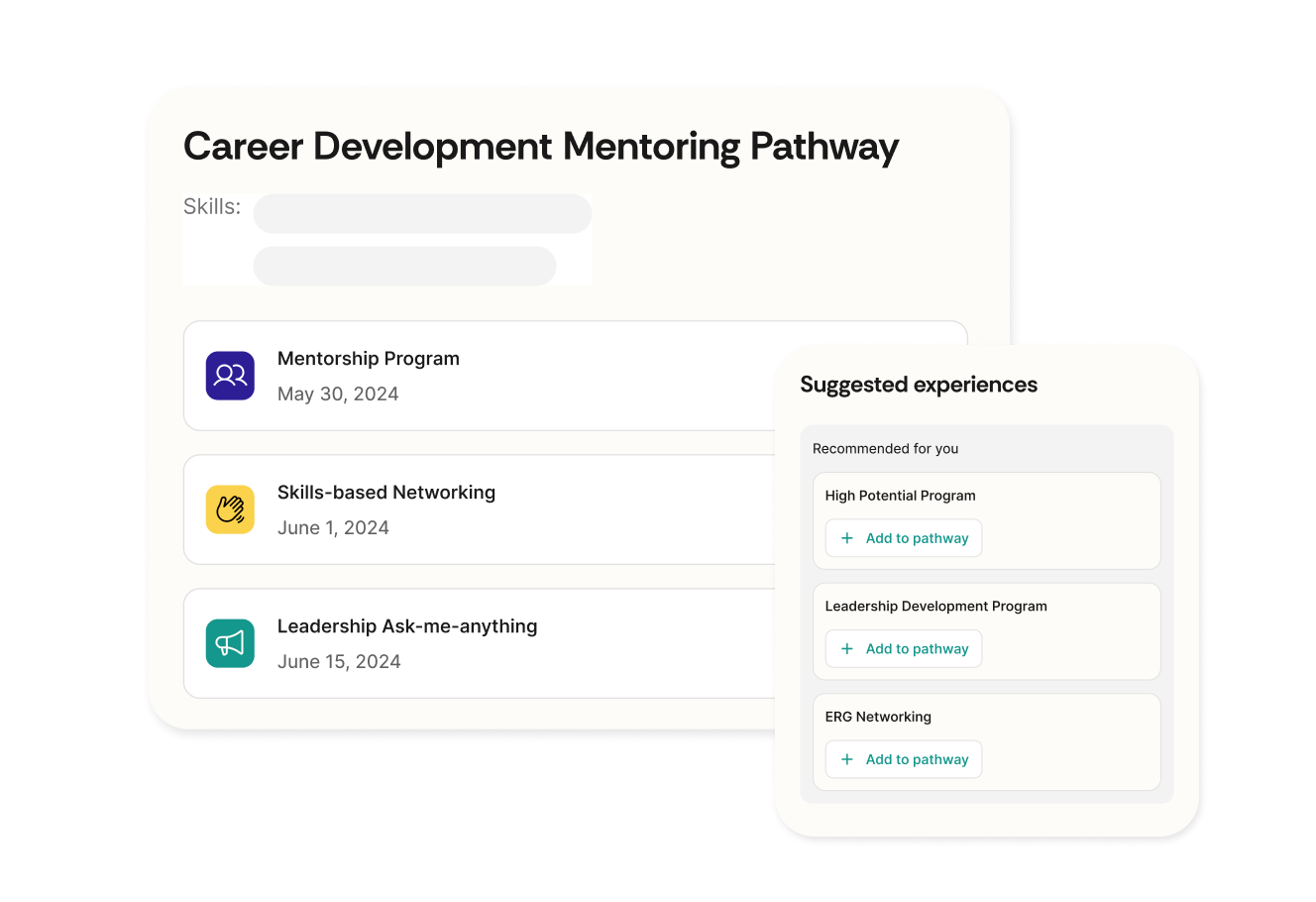
4. Smart-matching
Random mentor-mentee matches leave something to be desired. For mentorship to make the maximum impact, employees should be connected with the mentors, peers, and subject matter experts who can help them develop the skills and knowledge they need.
Smart-matching algorithms are designed to create purposeful matches based on relevant criteria, such as seniority, role, skills, and team. It factors in employee and organizational goals and interests to generate the matches that are most likely to drive the outcomes that you care about.
The best mentorship software takes it a step further by automating the matching process. Instead of the stress that comes with matching in spreadsheets, your mentorship software can pull employee data in from your HRIS, layer it with your matching criteria, and automatically generate matches that fuel engagement—and talent outcomes.
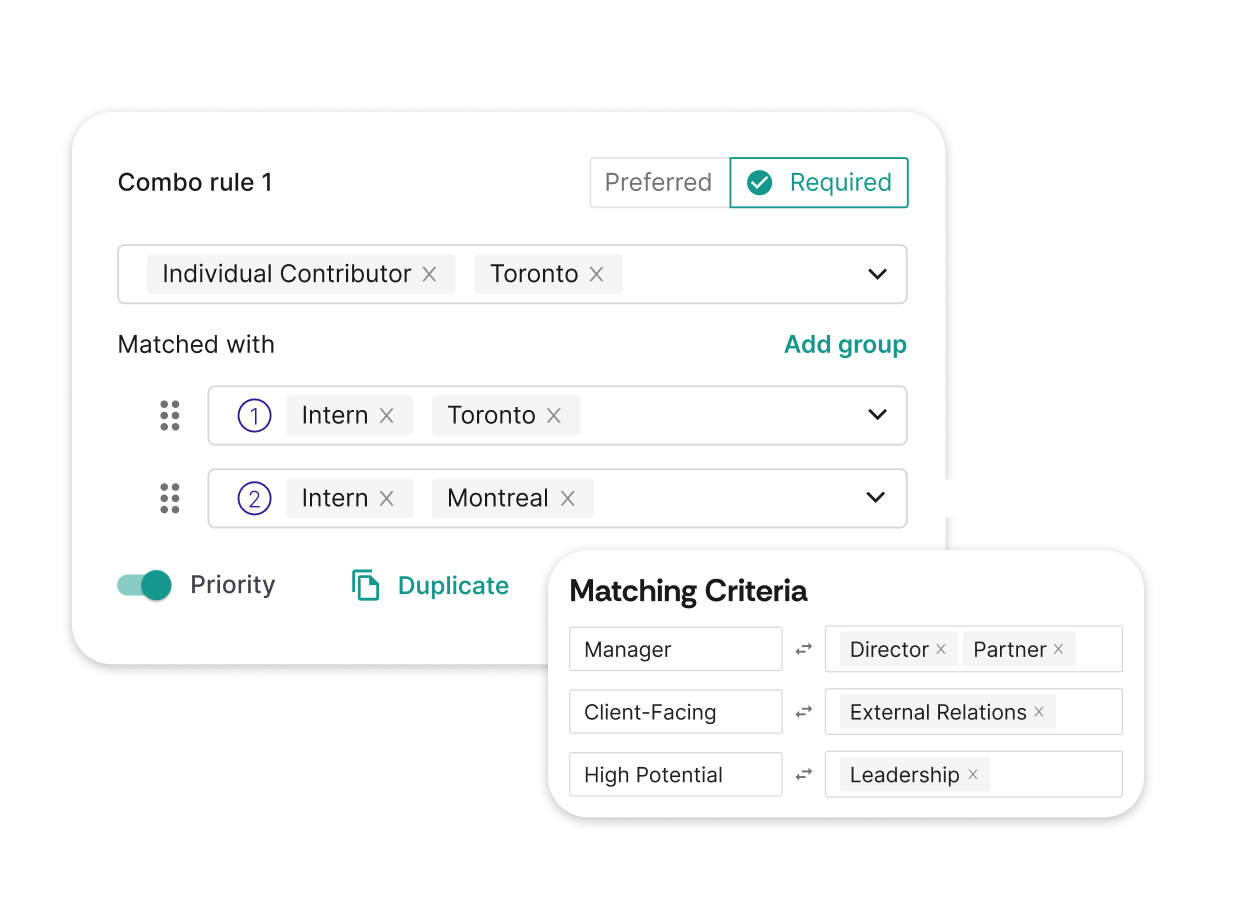
5. Resources and discussion guides
For many employees, creating new connections with peers can be awkward and intimidating. Providing participants with a library of resources throughout the mentoring experience can help foster those relationships while making the most of every mentoring conversation. Discussion guides can also keep conversations on track, so employees focus on sharpening their skills and sharing the knowledge that drives key talent outcomes.
Software that features templates and expert-backed resources make it easy to launch your mentoring program while giving admins time back to focus on scaling your efforts. And if you can make those resources your own, by including unique terminology or existing resources from your learning management system (LMS) or learning experience platform (LXP), even better.
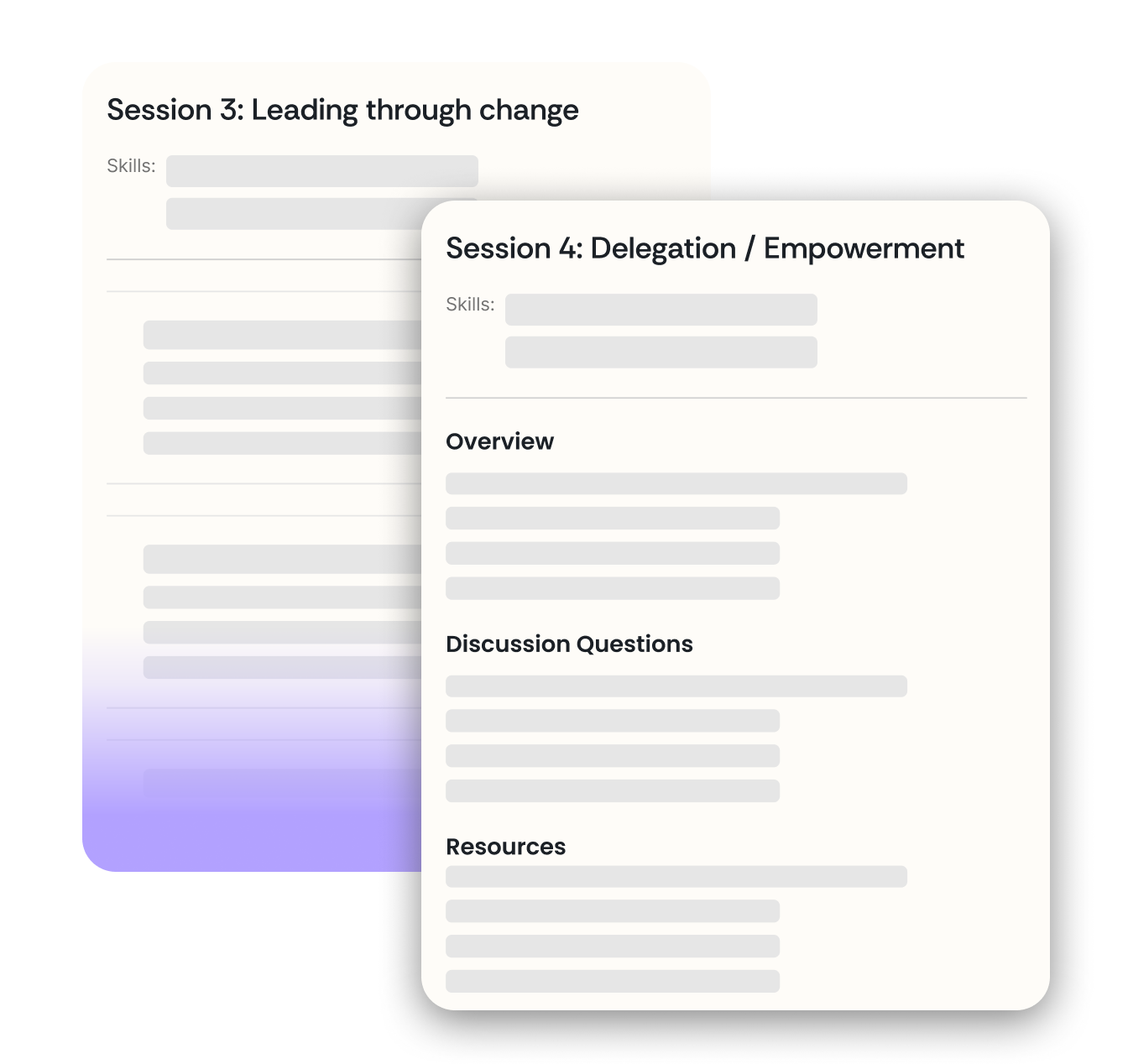
6. Automated communications
While learning and development are important to employees, it can be tricky to make mentorship a priority in the middle of an all-too-busy work week. Automations help streamline mentorship and integrate it seamlessly into your daily flow of work so you can maximize employee engagement and minimize the lift.
For program managers, a software that automates program communications makes it easy to promote your program and keep the momentum going through regular check-ins. From segmenting out program invites to gathering participant feedback, admins can skip endless email drafting and maximize impact—without wasting hours manually managing your mentorship program.
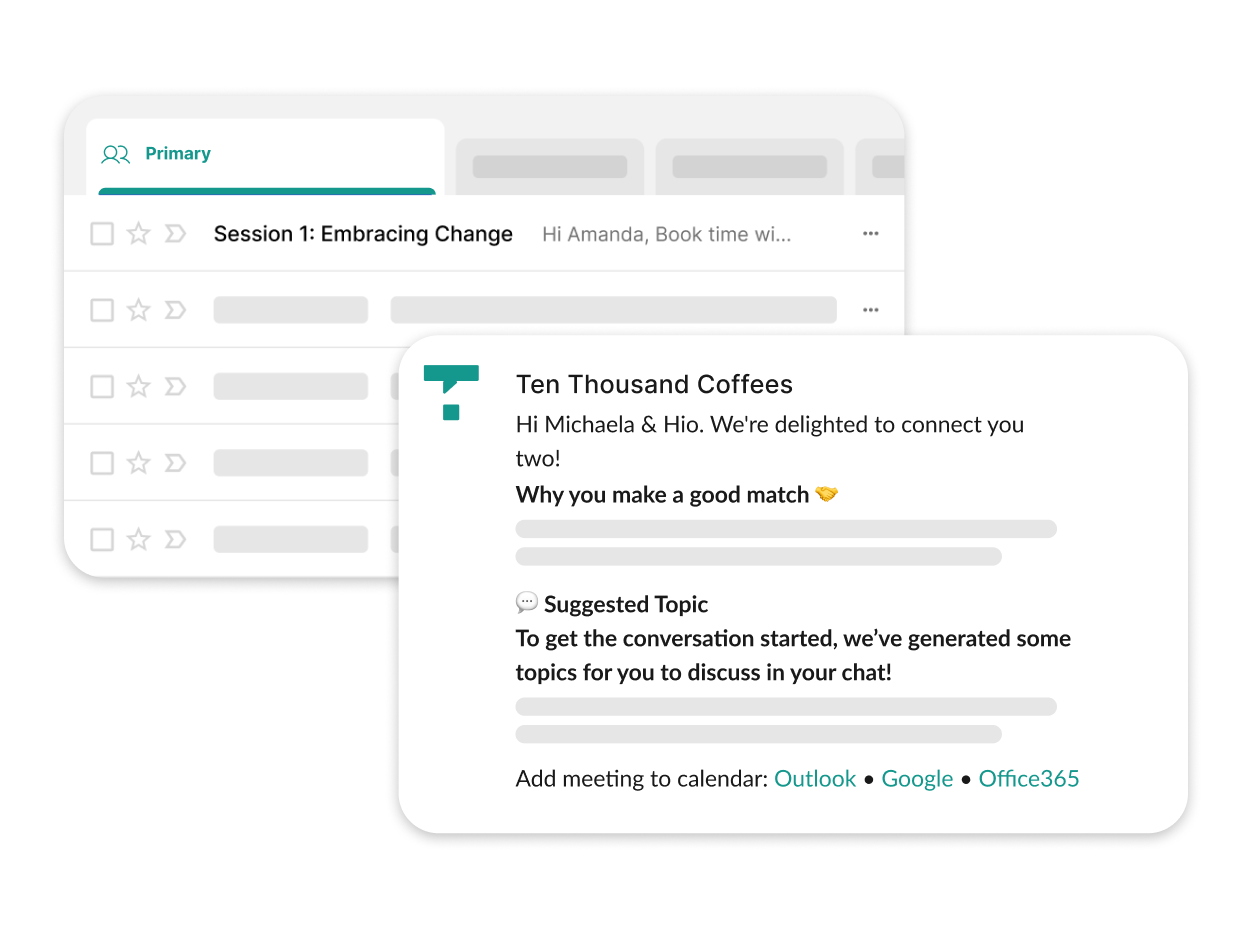
7. Reporting and analytics
One of the biggest challenges that organizations face with mentorship and social learning initiatives is the ability to extract a quantifiable impact. While mentorship has been shown to move the needle on key talent metrics, like employee engagement, development, mobility, and retention, you need the systems in place to prove it.
The right mentorship software should offer robust reporting and analytics, so you can uncover the invisible impact of mentorship and prove ROI. Ideally, you should be able to demonstrate value across two key dimensions:
Program health (engagement metrics)
On one level, you need real-time visibility into program health—metrics like registration rates, session activity, match quality, and participant satisfaction help you track engagement and ensure a positive experience for mentors and mentees alike. This also includes insight into who employees are connecting with and feedback on how they're actively developing through these relationships.
Broader talent outcomes (impact metrics)
On a deeper level, impact metrics connect mentorship to strategic outcomes across the employee lifecycle. This includes tracking skill development trends, understanding how mentoring supports internal mobility and promotions, and measuring improvements in retention and engagement—particularly within key talent segments. When captured effectively, these insights not only help you optimize your program, but also position mentorship as a high-impact, ROI-driven talent strategy.
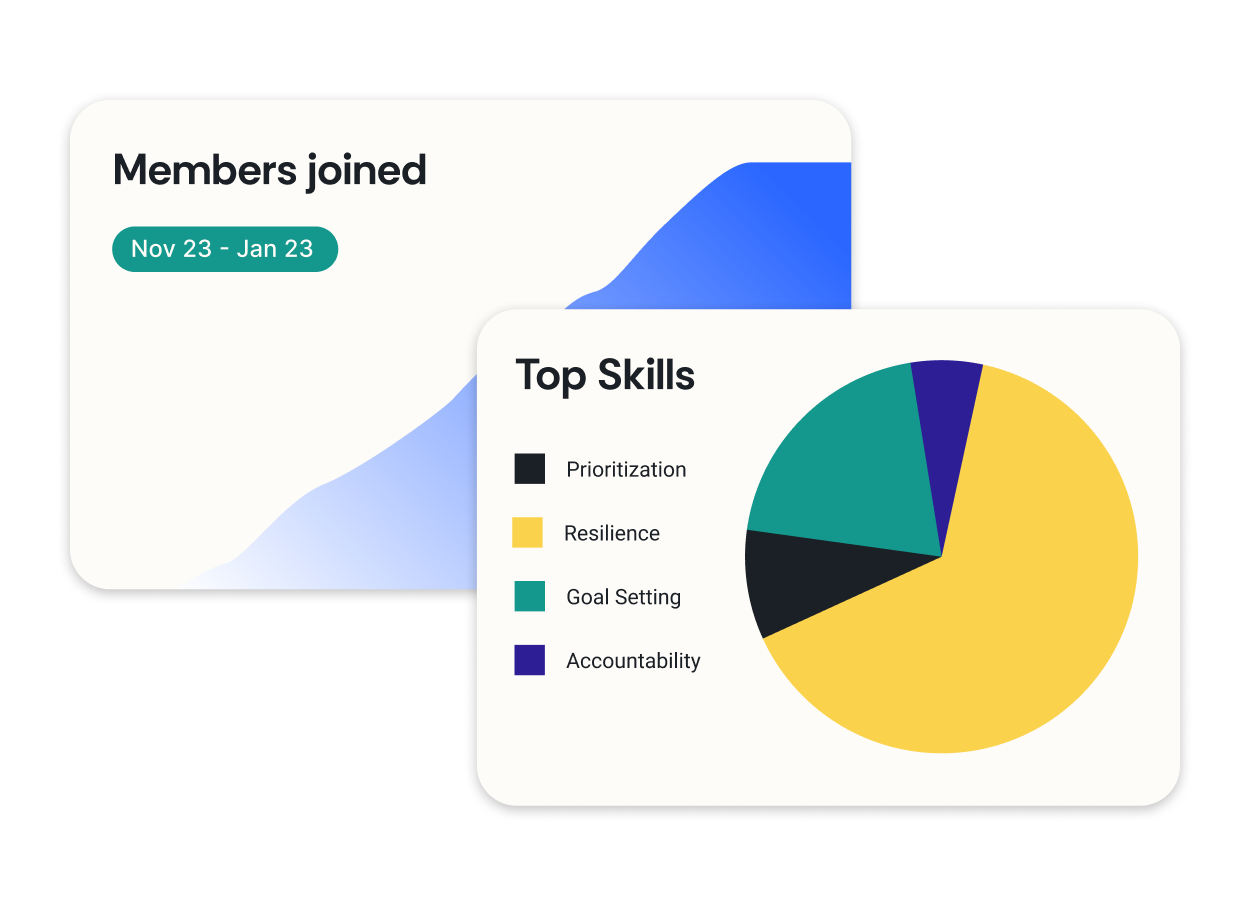
📌 READ MORE: How to Measure the Business Impact of Corporate Mentorship Programs
8. Integrations
The goal of a mentorship software is to simplify the process of managing an effective mentorship program. Integrations make that possible by working in tandem with your existing tech stack to enable a seamless mentorship experience for your employees and admins.
Look for a mentorship software that integrates with your:
- HRIS platforms, like Workday, to pull in relevant employee data for matching and segmentation.
- Communication software, to streamline program invites and communications.
- Calendar management tools, like Google Calendar, to make scheduling more convenient.
- Single-sign-on (SSO) solutions, to increase participation and ease of program participation.
How to choose the right mentorship software
Your mentorship software can be a major factor in the success of your mentorship program. So we’ve put together a step-by-step guide to help you find the right mentorship software for your talent development initiatives.
Step 1: Define your goals, audience, and ideal outcomes
Long before you can determine which mentorship software you need, you should be able to confidently articulate the outcomes that matter to your business.
- What are your program goals? The talent objectives you want to achieve should inform key features, like types of mentoring experiences and supported use cases.
- Who is your target audience? The participants in your program—including demographics, departments, experience levels, and more—should inform software features and curriculum priorities.
- What are your desired outcomes? The problems that you’re trying to solve with mentorship and the results you expect to achieve should inform the metrics and analytics that your software should be able to track.
📌 READ MORE: Effective Mentorship Programs Start with Strong Goals. Here's How.
Step 2: Prioritize features and functionality
You can’t have everything but you can focus on the features and functionality that will make the biggest impact. Take the time to define the features in your mentorship software that you must have versus the ones that would be a nice bonus.
- Must-have features: These are essential functionalities that are non-negotiable for your program's success. For example, smart-matching, program analytics, and tech stack integration.
- Nice-to-have features: These are helpful features that can enhance the program but are not strictly required.
Step 3: Consider the essentials beyond features
When it comes to software, there are often features that live behind closed doors. While they may not be as flashy or as exciting, they’re often critical for program success and for stakeholder approval. Some examples might include:
- Scalability: How much larger can your program scale before you outgrow the software?
- Integrations: Does the software work with your existing tech stack?
- Data security and privacy: Does the software meet enterprise security best practices and any additional industry requirements for your business?
- Support and training: How much support is provided for implementation, management, and troubleshooting? Does the vendor only provide software, or do they partner with you to support your success?
- User experience: Is the product accessible and intuitive for admins and users?
- Implementation timeline: Does the time to launch align with your program goals and objectives?
Step 4: Evaluate vendors and making an informed decision
Like any major purchase, take the time to shop around. By exploring different vendors and understanding their features and functionality, you’ll get a better understanding of which software best meets the needs of your organization and your employees.
While evaluating vendors, there are a few key things you should consider:
- Product demos: It’s important to see a mentorship platform in action. The ability to see the features for yourself can be incredibly valuable in understanding the user experience and whether the functionality meets your expectations.
- Vendor communications: The communication from a potential mentorship software vendor in the evaluation process can be a strong indicator of the level of support and service you’ll receive after making a decision. A reputable vendor should be responsive and willing to clearly answer any questions you might have along the way.
- Pricing: Choose a vendor with a pricing model that best fits your needs. Remember to also evaluate future pricing, so you have a sense of what that might look like as your program grows.
- Contract terms: Before signing on the dotted line, make sure you understand the terms you’re agreeing to. Keep an eye out for details like the contract length, terms of termination, scope of support, and contract changes so there are no surprises down the line.
About 10KC's mentoring software: our vision
Over 200 world-class organizations have partnered with 10KC to build their winning mentorship strategies to retain, develop, and engage top talent.
With all the tools you need to implement and manage your mentoring program, 10KC is redefining mentorship for the modern workplace—so you can transform your talent development initiatives into a strategic lever that makes a real impact.
10KC’s mentoring software helps organizations:
- Deliver tailored mentorship programs in less time: Implement personalized programs with ease using off-the-shelf pathways designed to empower and activate key talent groups.
- Shape dynamic mentoring experiences: Offer multi-dimensional learning and development opportunities from one-on-one mentoring to group sessions that come together to create an engaging mentorship experience.
- Engage and develop top talent: Take advantage of discussion guides and resources backed by industry experts to keep employees engaged and focused on developing the skills they need to thrive in their careers.
- Prove mentorship ROI: Keep a pulse on development and understand the value of every connection with robust real-time reporting and analytics, so you can showcase the impact.
- Reduce program set-up time by 80%: Integrations with the tools you use every day simplify implementation, management, and program engagement.
See for yourself what makes 10KC’s mentoring software stand out from the crowd.
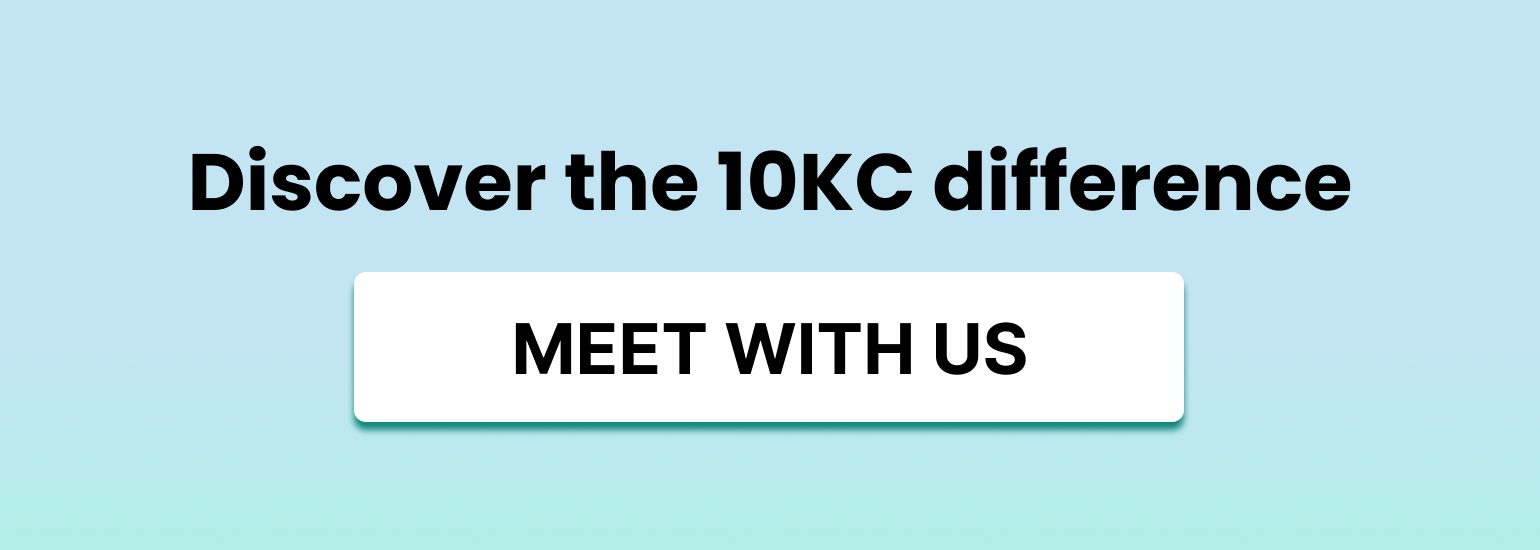









.png)